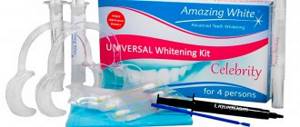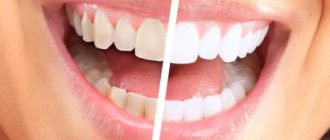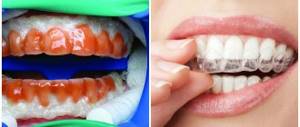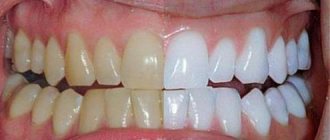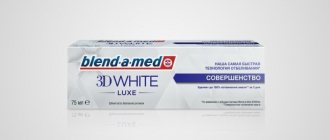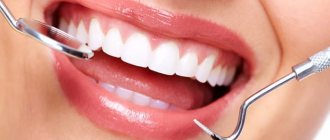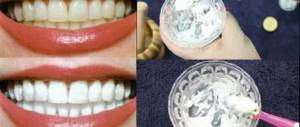Oral hygiene
Professional oral hygiene is a preventive procedure aimed at preventing caries and gum disease. The dentist uses an ultrasonic scaler to remove hard dental deposits under and above the gums, and then uses an air-flow device to remove plaque from coffee, cigarettes, wine and other highly pigmented products. Of course, once the stained plaque is destroyed, the teeth will become lighter.
However, such whitening does not occur; the teeth simply acquire their natural color. So, if someone has fairly white teeth by nature, but a lot of plaque, professional hygiene for him will be almost whitening, because the teeth will become much whiter. But if you already have light teeth, then professional hygiene will not make them whiter, but it will make them healthier. Professional hygiene makes teeth healthier, as all cariogenic microorganisms and tartar, which is the cause of gum disease, are removed, and the doctor also cleans those places that we habitually miss during daily brushing.
In addition, teeth are polished so that less plaque accumulates on them, and fluoridated so that the enamel remains strong and healthy. Fillings and crowns are also polished, which extends their service life. In general, perform professional oral hygiene at least 2 times a year and your teeth will be in good health.
How is professional teeth cleaning different from teeth whitening?
Today we will talk about the most common misconception regarding professional hygiene and teeth whitening. Many people confuse these two concepts and mistakenly call teeth whitening. Let's figure it out together.
First, you need to talk about the reason for the change in color and shade of the tooth surface.
There are several reasons:
- bad habits (smoking);
- Irregular brushing of teeth;
- abuse of strong tea and coffee;
- a consequence of the side effects of drugs.
If you examine the surface of the tooth under a microscope, you can see that the enamel has a porous structure. With frequent consumption of strong tea and coffee, as well as smoking, aggressive dyes and pigments penetrate the surface layer of enamel, causing it to darken.
After every meal, food particles remain in the mouth. When brushed irregularly, they form plaque together. Plaque can be pigmented and non-pigmented, soft and hard, subgingival and supragingival. It goes through several stages of formation. Initially, plaque is soft, non-pigmented and supragingival. If it is not cleaned at this stage, then after some time it begins to mineralize and enters the hard stage (mineralized) or the stage of tartar. Then the plaque penetrates into the subgingival area and settles on the surface of the tooth root.
There are two ways to restore your teeth to their natural whiteness.
The first is professional teeth cleaning. St. Petersburg is a city where many dentists perform this procedure. What is professional teeth cleaning? The price will depend on the state of oral hygiene.
Professional teeth cleaning is a procedure for cleaning the surface of teeth from plaque. With its help, teeth return their natural color and shade. It consists of several stages. First, all surfaces of the teeth are treated with powder and water under pressure. This step is necessary to eliminate soft and pigmented plaque. Mineralized supragingival and subgingival calculus is then removed using ultrasound. At the end of cleaning, the surface of the teeth is thoroughly polished using a brush and paste. The specialist gives recommendations on individual oral hygiene, and also helps to choose a toothbrush, paste and dental floss for the patient.
The second method is teeth whitening. In this case, the original color of the teeth is lightened due to the exposure of the tooth surface to high concentration hydrogen peroxide. Hydrogen peroxide “knocks out” dark pigment from the surface layers of enamel, thereby brightening the tooth surface by several tones.
So, let's summarize.
1. Professional oral hygiene is carried out to clean the surface of the teeth from plaque.
2. Whitening allows you to change the original shade of your teeth.
3. Professional hygiene must be carried out once every six months.
4. After brushing your teeth, you must carefully follow the dentist's recommendations.
“Mikhailovskaya Clinic” carries out such a procedure as professional teeth cleaning. The hygienist will select individual oral hygiene products for you, help you choose a paste and brush, and also show you on models how to brush your teeth correctly.
We are waiting for you in our clinics.
Dentist therapist, hygienist Anna Vladimirovna Popkova.
Teeth whitening
What about whitening? It is carried out directly to lighten the enamel, and professional hygiene serves as the first stage. That is, if you are not satisfied with the natural color of your teeth after professional hygiene, then you need whitening: a special composition is applied to the teeth, which, under the influence of a special lamp, destroys the pigment located in the enamel. The teeth are then strengthened with fluoridation.
You can choose home whitening using special trays - it is more gentle and costs less, but it will require organization from you (the trays must be worn a certain number of hours a day) and does not give the same effect as “office whitening”. With proper care and periodic maintenance home whitening, you will get white teeth for a period of 1 year. You can find out more here.
Thus, for healthy teeth, come for professional hygiene 2 times a year, and if you want your teeth to become much whiter, we will do whitening for you. Remember, one procedure does not replace another, as they have different goals.
Preparing for teeth whitening
Today it is easier than ever to get a snow-white, dazzling smile. The number of whitening methods and systems is simply off the charts. The choice is large, but it is extremely difficult to choose. We have already written about the differences in whitening methods and systems earlier, but today I would like to dwell in more detail on what is important for the patient to know before teeth whitening.
Advertisements for whitening systems often talk about the effectiveness and accessibility of the procedure, its safety, painlessness and the speed of achieving the smile of your dreams, but the issue of proper preparation for the whitening procedure remains without due attention, and completely in vain.
There are several important considerations that patients should pay attention to before scheduling teeth whitening in order to achieve truly noticeable, predictable and long-lasting results.
Proper and timely preparation for whitening has the following advantages:
- first of all, it ensures the safety of the procedure for tooth enamel;
- reduces the risk of severe pain during and after the procedure;
- helps achieve the most pronounced whitening effect.
Prepare for whitening correctly, and you will not be disappointed with the results!
First, and most importantly, before whitening you need to make sure that the oral cavity is sanitized: that is, you do not have any diseases of the teeth and gums at the time of the procedure. Agree, snow-white teeth are in no way combined with caries, gum problems, and bad breath. Also, whitened teeth do not look good at all if the patient has missing teeth in the smile area or a pronounced malocclusion. That is, oral health should always be a priority, and teeth whitening will only be a bright touch to the smile of your dreams.
Here, however, one caveat should be made, because the Internet is replete with conflicting information on this matter. If you are in the process of dental treatment, but you can’t wait to whiten them no matter what, the doctor will definitely cover the untreated teeth with temporary fillings: that is, even if you have not treated all your teeth before whitening, the doctor can offer options on how to carry out the procedure without harm to your teeth. health of teeth undergoing treatment.
In addition, it should be taken into account that only natural teeth are whitened. Fillings, restorations, crowns and veneers cannot be bleached! Therefore, if you have artificial structures in the smile area, after whitening they will have to be replaced so that they match the color of the whitened teeth.
Depulpated (dead) teeth also cannot be bleached: their darkening is associated with the removal of the nerve. Such teeth are pre-whitened differently: by intracanal bleaching - this is the only way their color can be equalized with the color of other teeth.
It is impossible to accurately predict or “order” the exact color of whitening. The result of whitening is individual and depends on many factors. For example, gray-brown teeth are less amenable to whitening than yellow teeth; and fangs bleach worse than incisors. These are also important nuances that the patient must understand in order not to harbor illusions regarding the whitening procedure, but to soberly assess the capabilities of modern systems.
Teeth may whiten unevenly: the cervical area of the teeth (which is closer to the gums), as a rule, is slightly darker - this is the norm. After some time the color evens out. On average this happens after 14 days. The same amount of time is needed to evaluate the final result.
Remember that the only option to ensure the same, completely uniform and planned white color of teeth is to install ceramic veneers. Whitening is designed to significantly lighten the teeth in order to give the smile brightness and radiance, but does not radically change them.
Also a prerequisite for proper preparation for whitening is professional teeth cleaning before the procedure. Firstly, after brushing, the teeth will acquire their natural color, from which you can build on for the correct organization of the process in order to achieve the desired result; In addition, there should be no “barriers” to the penetration of the whitening composition on the teeth: the composition should lie smoothly and evenly. Remember that whitening your teeth without first brushing means accepting a worse result in advance.
Now you know all the intricacies of preparing for teeth whitening and you can be sure that the whitening result will truly delight you!
0
How to maintain the results for a long time?
Professional cleaning: rules must be followed.
After the procedure, you should not use an old toothbrush, because bacteria will probably settle on it, which will negate the benefits of the procedure. In addition to a new brush, it is worth purchasing an irrigator and using dental floss and a brush every day.
Another limitation: it is better not to eat within 30-60 minutes after professional hygiene. This is necessary so that the products used to maintain dental health have time to have a positive effect.
Whitening: It is important to follow the “white diet”. Avoid exposure to food dyes for 7-10 days. You should refrain from tea, coffee, juices, red wine, beets, carrots, red fruits and berries. In the future, it is recommended to brush your teeth with whitening toothpastes immediately after consuming coloring foods.
What are the contraindications?
Professional cleaning: do not do this if you have allergies. Namely, in case of allergic reactions to abrasive components. For bronchial asthma, the use of a sandblasting system (air flow) is contraindicated.
Bleaching: not done due to general medical contraindications. Absolute contraindications include age under 18 years, pregnancy and lactation; allergic reactions to components of the bleaching system; oncopathology; diabetes mellitus, as well as taking photosensitive medications.
Relative contraindications: acute inflammatory processes in the gum area, a large number of fillings, carious cavities, the presence of wedge-shaped defects with exposed dentin, smoking.
Despite the gentle materials used in modern dentistry, you should not whiten your teeth more than once every six months.
Polina Zhovtyak Dentist-therapist at the UMMC-Health clinic
Professional whitening methods
Modern technologies and materials are used during the procedure:
- An ultrasonic scaler is used to remove tartar and stubborn plaque. A special gel containing oxygen is first applied to the surface of the teeth. During cleaning, the device produces oscillatory movements that knock down deposits and lighten the enamel. The processing time is only 10 minutes. During this time, teeth become 5 shades lighter! The event is comfortable and safe for the integrity of bone tissue. Hygienic cleaning is recommended before therapeutic or surgical treatment, installation of fillings, dental prostheses.
- Professional teeth cleaning is also not complete without Air Flow technology. A jet of air, abrasive powder, and water is directed under pressure onto the surface to be treated. This makes it possible to knock down dark plaque and achieve two shades of whitening!
- ZOOM photobleaching is performed using a gel. Under the influence of a special lamp, it releases oxygen, which eliminates pigmentation. The final stage is remineralization - fluoride varnish coating. After the procedure, the surface brightens by 8-12 tones!
- Some teeth whitening methods are based on chemical effects on the enamel. To remove yellowness, preparations containing hydrogen peroxide are used.
- Laser treatment also helps eliminate hyperpigmentation. The laser acts on the gel and activates the oxidation process, under the influence of which deposits are destroyed.
What is Air Flow cleaning?
Important! Air Flow is an effective whitening method, during which a stream of a special solution is directed at the teeth under increased pressure. For some reason, many people think that this cleaning method is a rather unpleasant procedure, but after they fully learn about it, their opinion completely changes. The thing is that during this procedure no chemicals or aggressive substances are used, so during it the risk of damage to the enamel is reduced. The cleansing process itself takes quite a bit of time. It is quite simple and easy, and has an increased degree of safety for the patient. This gentle procedure allows you to eliminate not only soft plaque, but also hard stone deposits. Usually, after this cleansing method, the enamel brightens by several shades at once. However, for those who want to get bright and snow-white teeth, this whitening method is not suitable
Professional cleaning with Air Flow is a method of cleaning teeth that removes plaque that has arisen under the influence of external factors, but if the yellow tint of teeth is due to the genetic characteristics of a person, cleaning with Air Flow will not change the situation.
How long does the procedure take and how does it work?
Professional cleaning takes 40 to 60 minutes. The procedure begins with an examination. If there are no contraindications, experts proceed as follows:
- Tartar is removed. Ultrasound is considered the most effective method.
- Remove soft plaque with special tools and abrasives. At this stage, stains from tea, coffee and cigarettes are removed.
- Teeth are polished to prevent plaque formation. It is much more difficult for him to stay on a smooth surface.
- Teeth and gums are treated with special means. They help protect the oral cavity from bacteria, restore minerals in the hard tissues of the teeth and prevent inflammation of the soft tissues of the gums.
- Select products for caring for teeth and gums at home.
Whitening lasts from 20 to 60 minutes (and may require several sessions). During the examination, the doctor pays special attention to fillings and crowns in the smile area. If they are, they should be replaced. Otherwise, the result is unlikely to suit you. The bleaching itself proceeds as follows.
Whitening gel is applied to the teeth and an LED lamp is directed at them. Under the influence of light, a chemical process occurs that we will not describe. Let us only note that as a result you get a snow-white smile.
The process of applying the gel to the teeth and activating it with a lamp can be repeated 3-4 times.
Finally, enamel strengthening agents are applied to the teeth.
Why go for the procedure?
Professional cleaning: for oral hygiene. The procedure is needed to prevent major dental diseases.
Cleaning consists of mechanical removal of tartar and soft plaque. Aesthetics are secondary here, although the smile will become whiter due to the return of natural tooth enamel. Another bonus is getting rid of bad breath. It is caused by plaque bacteria. Professional oral hygiene must be carried out every six months - from the moment the baby teeth erupt.
Polina Zhovtyak Dentist-therapist at the UMMC-Health clinic
Whitening: for beauty. The purpose of this procedure is purely aesthetic. It allows you to lighten tooth enamel. Therefore, teeth located in the smile zone are most often subject to whitening.

